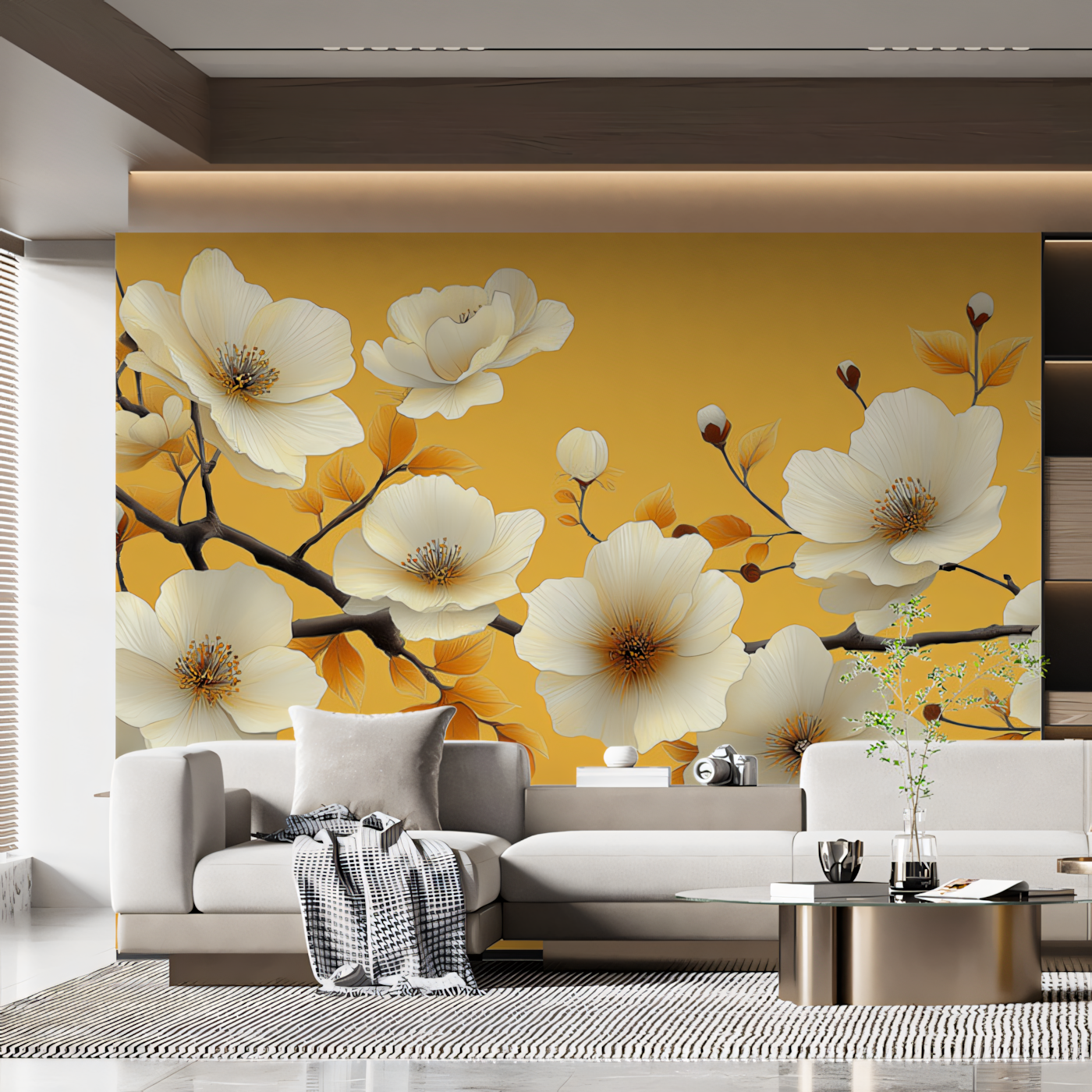
Fire-Resistant and Waterproof Wallpapers: How They Work
1. What Are Fire-Resistant Wallpapers?
A. How Fire-Resistant Wallpapers Work
Fire-resistant wallpapers are treated with flame-retardant chemicals or made from naturally fire-resistant materials like fiberglass, PVC, or treated vinyl. These wallpapers:
✔ Slow down the spread of fire by preventing flames from catching and spreading.
✔ Emit minimal smoke and toxic fumes, reducing fire-related hazards.
✔ Comply with international fire safety regulations, making them ideal for public spaces.
B. Fire-Resistant Materials Used in Wallpapers
🔹 Fiberglass Wallpaper – Naturally non-combustible and highly durable.
🔹 Vinyl-Coated Fire-Retardant Wallpaper – Treated with flame-retardant chemicals.
🔹 Intumescent Wallpaper – Expands when exposed to heat, creating a protective barrier against flames.
🔹 Specialty Fireproof Backing Layers – Applied to standard wallpapers for extra fire protection.
C. Where to Use Fire-Resistant Wallpapers?
✔ Hotels, hospitals, schools, and commercial spaces requiring fire safety compliance.
✔ Kitchens and dining areas where heat exposure is frequent.
✔ Escape routes, corridors, and elevators to slow down fire spread.
2. What Are Waterproof Wallpapers?
A. How Waterproof Wallpapers Work
Waterproof wallpapers are coated with water-resistant films or treated materials that prevent moisture absorption. These wallpapers:
✔ Protect walls from humidity, mold, and mildew.
✔ Are easy to clean and maintain, making them perfect for bathrooms and kitchens.
✔ Resist stains, spills, and condensation, ensuring long-lasting durability.
B. Types of Waterproof Wallpaper
🔹 Vinyl Wallpaper (Most Common) – 100% waterproof, ideal for bathrooms and kitchens.
🔹 PVC-Coated Wallpaper – Resistant to water splashes and moisture buildup.
🔹 Washable Wallpapers – Feature a protective top layer, allowing easy cleaning with damp cloths.
🔹 Glass Fiber Wallpaper – Extremely durable and resistant to both fire and water damage.
C. Best Areas to Use Waterproof Wallpapers
✔ Bathrooms & Shower Areas – Protects against high humidity and splashes.
✔ Kitchens & Dining Rooms – Prevents staining and grease absorption.
✔ Laundry Rooms & Basements – Guards against damp conditions and mold growth.
3. Fire-Resistant vs. Waterproof Wallpapers: Key Differences
| Feature | Fire-Resistant Wallpaper | Waterproof Wallpaper |
|---|---|---|
| Main Purpose | Prevents fire spread | Protects from moisture & stains |
| Best Material | Fiberglass, vinyl, intumescent layers | PVC, vinyl, glass fiber |
| Primary Coating | Fire-retardant chemicals | Water-resistant layer |
| Best For | Hotels, commercial buildings, kitchens | Bathrooms, basements, kitchens |
| Durability | High | High |
4. How to Choose the Right Wallpaper for Your Space
✅ For Kitchens: Fire-resistant wallpaper near cooking areas + waterproof wallpaper for backsplashes.
✅ For Bathrooms: Fully waterproof vinyl wallpapers to withstand humidity.
✅ For Commercial Spaces: Choose certified fire-resistant wallpapers for public safety compliance.
✅ For Hotels & Restaurants: A combination of fire-retardant and washable wallpapers ensures both safety and hygiene.
5. Latest Innovations in Fire-Resistant & Waterproof Wallpapers
🔹 Smart Wallpapers with Self-Extinguishing Properties – Advanced coatings that stop burning instantly.
🔹 Eco-Friendly Waterproof Wallpapers – Made from sustainable and non-toxic materials.
🔹 Hybrid Wallpapers – Combining fire-resistant and waterproof features for maximum durability.
🔹 Anti-Bacterial & Mold-Resistant Coatings – Ideal for high-humidity areas.
Conclusion
Fire-resistant and waterproof wallpapers provide both functionality and safety, making them ideal for modern homes, commercial spaces, and high-risk environments. By selecting the right material and coating, you can ensure long-lasting protection against fire, moisture, and stains without compromising on aesthetic appeal.

Celebrate the Artists
With every Vivawalls wallpaper you bring home, you celebrate and support the creativity of its artist.










Leave a comment